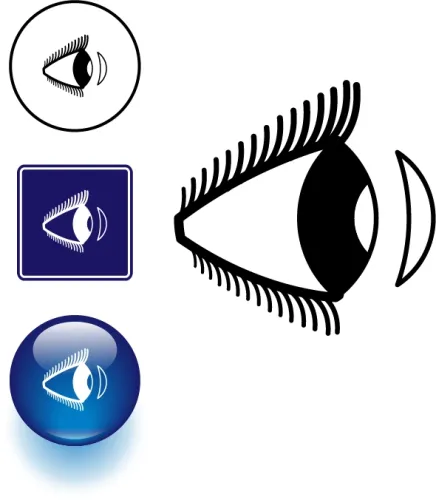Outpatient Facility Coding Alert
Get Answers to 4 Pertinent Skin Biopsy Questions

Use these FAQs as a reference for your future skin biopsy claims.
Any general surgery coder should have a fundamental understanding of the numerous skin biopsy techniques, and, more importantly, how to code for them. As you’ll see with a few pointers and some expert insights, there’s a method to the madness behind skin biopsy coding processes.
Shift your focus toward this set of frequently asked questions (FAQs) for all you need to know about the basics of skin biopsy coding.
Emphasize Surgical Technique
Question 1: What distinguishes types of skin biopsies in a way that aligns with the CPT® codes?
Answer 1: The integumentary biopsy section includes code range 11102-+11107. The codes within this set describe removing a single lesion with different, specific techniques, and three add-on codes for removal of multiple lesions.
Tip: Although the CPT® guidelines characterize partial-thickness biopsies and full-thickness biopsies, that distinction isn’t what informs your code choice. Nor does specific anatomic skin site impact your code choice (with some exceptions you’ll read about in another FAQ). Instead, CPT® identifies three specific techniques physicians can use to obtain skin biopsies: tangential, punch, and incisional. If your surgeon documents one of those standalone methods, you know the procedure is a biopsy.
Use the following brief guide to help you distinguishing the codes based on understanding the surgical technique:
Punch: In this procedure, “the surgeon pierces the lesion using a specialized skin biopsy instrument,” says Terri Brame Joy, MBA, CPC, COC, CGSC, CPC-I, national director of marketing and revenue management at FasPsych in Omaha, Nebraska. The instrument is typically a 2-8 mm “pen” that can go deep into the subcutaneous layer and remove a full-thickness, cylindrical sample of skin.
Incisional: This biopsy involves removing a larger and deeper amount of skin — a full-thickness sample of tissue penetrating deep to the dermis, into the subcutaneous space — which typically requires the use of a scalpel and may involve a more complex closure.
Tangential: These codes describe taking a sample along the tangent, or superficially. The provider can accomplish this using the following techniques or instruments:
- Scoop, which requires going deeper than shaving and uses a straight or flexible blade.
- Saucerization, which is like a scoop but doesn’t go as deep and uses a razor that is folded. This technique is mostly used for lesions that may be melanomas.
- Curette, which can either refer to the instrument used in a scoop biopsy or to a curettage biopsy, which is a seldom-used technique to biopsy a difficult-to-reach anatomic area.
- Shave, which means removing a tissue sample by elevating the skin, then using a straight blade to slice the skin to the epidermis or superficial dermis level. Don’t confuse a shave biopsy with shaving procedures described by codes 11300 (Shaving of epidermal or dermal lesion, single lesion, trunk, arms or legs; lesion diameter 0.5 cm or less) through 11313 (Shaving of epidermal or dermal lesion, single lesion, face, ears, eyelids, nose, lips, mucous membrane; lesion diameter over 2.0 cm), cautions Pamela Biffle, CPC, CPC-P, CPC-I, CCS-P, CHCC, CHCO, owner of PB Healthcare Consulting and Education Inc. in Austin, Texas. Codes 11300-11313 describe an excision procedure using a surgical blade with a horizontal slicing motion to remove the lesion from its base.
Distinguish Excision and Biopsy
Question 2: What’s the difference between an excision and a biopsy, and how does that impact coding?
Answer 2: Along with the codes 11102-+11107 introduced last year, CPT® provides an updated guideline section that has lots to say to help you distinguish skin biopsies from other skin procedures, such as excisions or scrapings.
Purpose: According to CPT® guidelines, biopsies “sample” a lesion, and codes 11102 through +11107 “indicate that the procedure is to obtain tissue solely for diagnostic histopathologic examination ….”
Excision: That’s different from an excision, which involves removing the entire lesion. CPT® defines excision as “… removal of a lesion, including margins ….” If the surgeon performs a procedure intended to remove/excise the entire lesion, you should choose the appropriate CPT® code based on the size and anatomic location of the lesion, and whether the lesion is malignant or benign. Report an excision of benign lesions using codes 11400-11446. A code from the 11600-11646 range describes malignant lesion excision.
Don’t miss: Excision isn’t the only procedure that you might confuse with skin biopsy. At the other extreme is a procedure that removes cells from the lesion surface. CPT® guidelines state, “sampling of stratum corneum only, by any modality (eg, skin scraping, tape stripping) does not constitute a skin biopsy procedure and is not separately reportable.”
Look for Other Sites
Question 3: Does the skin biopsy section describe all skin biopsy procedures, or are there other, site-specific codes I should use in some circumstances?
Answer 3: Although codes 11102-+11107 describe most skin biopsy procedures, CPT® does provide several site-specific codes you should know about. If your surgeon performs a skin biopsy from one of the following sites, you should report the more specific code rather than a code from the integumentary biopsy section. A few of these codes include:
- 11755 (Biopsy of nail unit (eg, plate, bed, matrix, hyponychium, proximal and lateral nail folds) (separate procedure))
- 30100 (Biopsy, intranasal)
- 40490 (Biopsy of lip)
- 40808 (Biopsy, vestibule of mouth).
Key: “Most of these codes pay more than the general integumentary biopsy codes because the procedures for these sites typically require more work,” says Joy. “In addition to misrepresenting your surgeon’s work, inadvertently missing the more-specific code could cost you significant pay.”
For example: A patient presents for surgery with a plaque-like lesion of the left lower eyelid. The surgeon makes an incision to biopsy the lesion. Because CPT® provides a specific code, you should report 67810, which pays $185.14, instead of 11106, which pays $155.91 (national nonfacility amount, conversion factor 36.0896).
Related Articles
Outpatient Facility Coding Alert
- ICD-10-CM Coding:
Try Out These 2 Demanding ICD-10-CM Surgical Setting Scenarios
Use all guidelines at your disposal for post-surgical complications Getting to the bottom of a [...] - Modifiers:
Learn The Ropes of Modifier 53 Coding for Terminated Biopsies
Consider a number of variables, including use of CT guidance. Biopsy coding can become a [...] - CPT® Coding:
Get Answers to 4 Pertinent Skin Biopsy Questions
Use these FAQs as a reference for your future skin biopsy claims. Any general surgery [...] - You Be the Coder:
Factor Pressure Ulcer Stage Into Coding Determination
Question: I am looking for the code(s) to report for the debridement of an infected [...] - Reader Question:
Know How MUEs Can Affect Bilateral Billing
Question: Why might I be receiving a denial for frequency when submitting two units of [...] - Reader Question:
Consider Patient History Before Reporting 42225
Question: How should I code an operative note note that involves the surgeon performing a [...] - Reader Question:
Stay-Tuned for New Vaping Disorder Code
Question: I’ve heard there’s a new diagnosis code coming out for patients with vaping-related conditions. [...]




